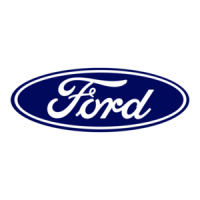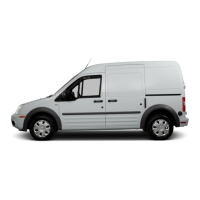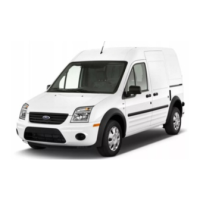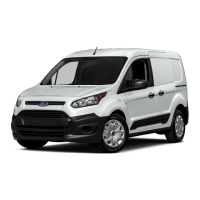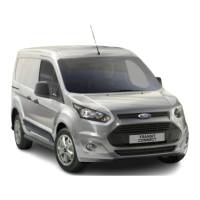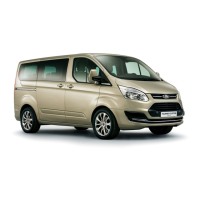
Do you have a question about the Ford TRANSIT CUSTOM 2012.75 and is the answer not in the manual?
| Brand | Ford |
|---|---|
| Model | TRANSIT CUSTOM 2012.75 |
| Category | Automobile |
| Language | English |
Provides guidance on how to use the manual and its structure.
Details updates and changes in this specific manual version.
Explains the manual's purpose, target audience, and general advice for vehicle conversion.
Outlines essential safety procedures for conversion work and vehicle operation.
Explains the meaning and usage of warning, caution, and note symbols throughout the manual.
Guides users on navigating the manual's sections, links, and index.
Lists and describes special order codes for vehicle options and aftermarket kits.
Covers legal, commercial, and safety requirements for vehicle conversions.
Provides contact details for Ford representatives and advisory services for vehicle conversion queries.
Offers guidance on selecting appropriate conversion types and relevant manual sections.
Details statutory rules, regulations, and data requirements for vehicle conversion approval.
Explains EMC legislation and precautions for fitting electronic equipment.
Provides guidance and checks for RF transmitter antenna placement and vehicle electrical equipment.
Advises on selecting vehicle specifications based on customer usage profiles and anticipated duty cycles.
Discusses how conversions can impact fuel economy and vehicle performance due to aerodynamics and added weight.
Explains how center of gravity changes due to conversion affect vehicle ride and handling.
Outlines EU directive requirements integrating environmental and recycling aspects into vehicle development.
Details correct procedures and safety precautions for jacking the vehicle.
Provides instructions and safety cautions for lifting the vehicle using a two-post lift.
Addresses legal compliance and potential impacts of conversions on noise and vibration levels.
Offers guidance on proper procedures for vehicle storage and transportation aids.
Covers general guidelines for component packaging and ergonomic considerations for the driver.
Warns against modifying critical suspension components and ensures clearance for moving parts.
Emphasizes locating controls within the driver's easy reach without impairing control.
Highlights the importance of complying with legal requirements regarding driver visibility.
Addresses safety requirements for cabin monitors and potential rear camera signal sources.
Discusses steps for vehicle entry/exit, including modifications and reinforcement of body structure.
Details legal requirements for front, rear, and side under-run protection directives.
Provides dimensions for the main load area based on vehicle wheelbase and roof height.
Specifies material, strength, and tightening torques for standard hardware bolts and nuts.
Covers essential aspects of load distribution, including axle and gross vehicle weight limits.
Warns against exceeding plated weights and discusses the importance of proper load placement.
Explains how mass changes affect the center of gravity and its influence on vehicle dynamics.
Details the method and preparations for testing vehicle center of gravity height.
Provides formulas and parameters for calculating the vehicle's center of gravity height.
Presents formulas related to calculating center of gravity, including trigonometry and geometry.
Outlines requirements and considerations for fitting tow bars and towing systems.
Specifies the need for Ford-approved tow bars and related information sources.
Details attachment methods, allowances, and compliance with EEC directives for tow bars.
General warnings and advice regarding modifications to the suspension system.
Details on front suspension components and spring mounting procedures.
Specifics on handling and mounting front suspension springs, including welding precautions.
Information on rear suspension components and spring mounting.
Precautions for rear leaf springs, including pre-stressing and welding safety.
Covers wheel clearance, tire specifications, spare wheel access, and tire repair kits.
Discusses ensuring sufficient clearance between tires, mudguards, and wheel arches.
Advises on using OE equivalent tires and the need for new labels if specifications change.
Emphasizes ensuring access to the spare wheel after conversion or relocation.
Recommends choosing appropriate storage for a tire repair kit for easy access.
Warns against painting wheel contact surfaces and recommends masking during paint work.
Covers general brake system functionality, maintenance, and legal compliance.
Ensures the brake system is fully functional post-conversion and meets legal requirements.
Directs users to contact Ford for kerb mass data and related information.
Advises on correct routing and clearance for front and rear brake hoses, avoiding twisting or chafing.
Provides warnings and cautions regarding modifications to the parking brake cable and system.
Warns against modifying brakes and disc cooling airflow.
Prohibits modifications to ABS, TCS, and ESC systems and provides contact info.
General information and cautions regarding engine-related modifications and electrical supply.
Lists available engine power curves for different diesel engine variants.
Covers auxiliary heater systems, installation, and potential airflow restrictions affecting engine cooling.
Provides warnings, cautions, and routing guidelines for auxiliary heating systems.
Details installation requirements for auxiliary heaters, including exhaust gas routing and corrosion prevention.
Warns against mounting components that could affect engine cooling performance due to airflow obstruction.
General information on front-end accessory drives, belt tensioning, and component specifications.
Explains belt tensioning, manufacturer-recommended components, and drive system limitations.
States that a reinforced clutch is not an option and axle ratio depends on vehicle weight.
Details the available VMT6 6-speed manual transmission and its compatibility with tachographs.
Covers exhaust system extensions, design principles, supports, and heat shields.
Addresses testing of non-standard exhaust systems for back pressure, noise, and emissions.
Advises on maintaining original setup, heat shields, and clearance for exhaust components.
Highlights the importance of maintaining heat shields, especially around catalytic converters, to prevent fire risk.
Explains the DPF's function, regeneration process, and fire hazards associated with high exhaust temperatures.
Discusses available exhaust lengths and ensuring proper gas ingress prevention for vans with bulkheads.
Covers warnings, auxiliary fuel lines, fuel tank lowering procedures, and fuel cooler clearance.
Provides comprehensive guidance on electrical wiring installation, routing, and techniques.
Outlines Ford's lack of control over auxiliary system installations and the converter's responsibility.
Details temperature requirements, fluid compatibility, connector types, and routing clearances for wiring.
Advises on best practices for connector pin assignments, terminal types, and separation of power/ground circuits.
Discourages using unused connectors for purposes other than intended by design.
Provides guidelines for proper grounding points, avoiding moving structures and fuel tanks.
Recommends positive retention of wiring and connectors to prevent noise.
Explains how to form drip loops in wiring to prevent water ingress into the vehicle interior.
Strongly advises against splicing, but details approved methods if unavoidable.
Provides a table of wire sizes with current ratings at different temperatures.
Covers EMC awareness for Ford wiring and warnings about routing near critical systems.
Details procedures for passing harnesses through sheet metal using protective grommets.
Illustrates areas in the rear cargo area where drilling is prohibited to avoid damaging wiring.
Covers trailer tow modules, harnesses, and connectors, including pin assignments and current/voltage ratings.
Details the 13-pin trailer tow connector, its pin assignments, and the trailer detection circuit.
Describes the CAN-Bus system, its interface, and warnings against tampering with wiring.
Explains the CAN-Bus system, message sets, and types of buses used in vehicle communication.
Introduces the BCM as the prime control module for vehicle lighting, locking, and security systems.
Covers the 12-volt electrical system, alternator, battery, and warnings about improper connections.
Provides general information on the Transit electrical system and specific warnings for modifications.
Illustrates the system diagram and describes the function of key components like PCM, BCM, and alternator.
Explains power management settings and how to return vehicles to Transport mode using diagnostic tools.
Warns against voltage boosters and covers legality, drive-ability, and integration of electrical circuits.
Provides warnings and cautions for fitting electric motors, including relay and fuse requirements.
Warns against cutting alternator wires and notes the LIN control.
Recommends charge balance calculations for conversions with high electrical consumers.
Refers users to sections for auxiliary fuse panel connections and standard Ford relays.
Covers battery information, safety precautions, and requirements for vehicles with Start-Stop.
Details essential battery checks, safety precautions, and types of batteries for Start-Stop vehicles.
Illustrates different battery configurations, including single, twin, and SVO options.
Explains battery configuration requirements for Start-Stop and SRC functionality.
Describes the function and installation of the Battery Monitoring Sensor (BMS).
Explains the function of the battery disconnect relay and its role in twin battery systems.
Provides recommendations for power usage and connectivity options based on electrical loads.
Presents torque and output performance curves for 150A and 210A alternators.
Warns against using propylene glycol coolant and provides guidelines for routing hoses.
Details CAN-Bus interface wiring for the instrument cluster and pin assignments.
Covers fitting dual horns or aftermarket horns requiring a separate relay.
Explains Start-Stop functionality, inhibitors, and potential impacts of vehicle modifications.
Details Start-Stop operation, inhibitors, and recovery features, along with warnings for modifications.
Explains the RPM speed controller feature, its modes of operation, and system availability.
Describes how to change the vehicle speed maximum setting via the Integrated Diagnostic System (IDS).
Introduces tachographs, legislation, pin assignments, and wiring.
Highlights the legal requirement for tachographs and wiring connections.
Details the standard Ford installation of tachograph harnesses in the overhead console.
Provides notes on compatibility and requirements for fitting tachographs to vehicles without the digital option.
Explains the need for dealer configuration changes for vehicle speed signals from the tachograph.
Covers the calibration process and activation requirements for digital tachographs.
Provides general specifications for audio head units, multi-function displays, and integrated control panels.
Details pin assignments for 24 and 26-pin connectors for audio head units.
Explains rear speaker wiring and how to splice into audio jumper harnesses if needed.
Warns against non-Ford approved systems and mentions Ford's hands-free and wireless technology.
Covers legal requirements for modified vehicle lighting and provides details on various exterior lights.
Explains how reversing lamps are activated and controlled, including load limits.
Advises using SVO Auxiliary Fuse Panel for additional exterior lamps and mentions configuration for CAT 6 indicators.
Details maximum permissible loads for hazard and direction indication systems.
Covers national regulations for front and rear fog lights and their permissible loads.
Provides information on end outline and side marker lamps for wide vehicles.
Warns against tampering with door mirror systems and notes unsuitability for aftermarket fit.
Details installation of additional internal lamps and lighting control via BCM.
Explains how to access connectors for interior lighting and power limitations.
Recommends SVO Auxiliary Fuse Panel for higher wattage interior lighting installations.
Covers door removal/modification, central locking, and configurable locking scenarios.
Provides guidance on maintaining door ajar warnings and configuring the BCM for no doors.
Explains how central locking is controlled by the BCM and methods for adding additional locks.
Lists Ford fuses and relays, with warnings about increasing fuse capacity and using approved parts.
Provides tables for Mini, Maxi, and J-Case fuses with part numbers, ratings, and colors.
Details Ford relays, including mini and micro relay types, parameters, and part numbers.
Warns against tampering with the base wiper system and specifies equivalents for alternative installations.
Lists Special Vehicle Options (SVO) harnesses and aftermarket kits for various conversions.
Provides a table of SVO parts, including auxiliary fuse panel harnesses and interface connectors.
Discusses interfacing with lighting outputs and PWM frequencies, with a focus on reverse signals.
Offers guidance on electrical connectors, cutting into wiring, and using approved connectors.
Warns against tampering with CAN Bus and using improper connectors, recommending approved harnesses.
Details customer connection points on the driver's seat pedestal and warnings about their use.
Describes the standard interface connector for accessing vehicle signals like speed and ignition.
Recommends the SVO Auxiliary Fuse Panel for fused power connections and details its interface.
Covers the beacon preparation pack, its wiring, and fuse requirements.
Details the utility vehicle switch pack, its connectors, and harness routing.
Illustrates SVO switch locations and components, including beacon and water heater switches.
Describes the high-specification interface connector for accessing multiple signals, power, and ground.
Provides guidance on adding 'Theater Lighting' for the rear interior lighting.
Provides essential information on ground points and proper connection techniques.
Illustrates and lists ground points on the vehicle body and chassis, emphasizing correct torque and routing.
Covers general information on body structures, including integrity, drilling, and edge painting.
Provides points to consider for body conversions, structural integrity, and load distribution.
Details safety procedures, preparation, and techniques for welding vehicle body parts.
Identifies boron steel parts and specifies areas that must not be drilled or welded.
Illustrates floor dimensions and 'no drill zones' relevant to the fuel tank and crash sensors.
Covers requirements for front end integrity related to cooling, crash safety, aerodynamics, and lighting.
Provides general information, warnings, and cautions for hydraulic lifting equipment on vans, buses, and kombis.
Details safety devices, load capacity, and converter responsibilities for hydraulic lifts.
Offers recommendations for attaching racking systems, including frame rigidity and fixing methods.
Provides guidelines for racking system installation, access, crash performance, and bulkhead use.
Covers general specifications for the body system, focusing on load compartment tie downs.
Details the fitted 'D' rings for load compartment tie downs and their locations.
Shows standard bulkhead fixing locations and discusses air circulation considerations.
Illustrates bulkhead fixing points and emphasizes compliance with legislation for bulkheads and grilles.
Covers interior lining, plywood cladding, and security/locking systems for body closures.
Advises on applying interior lining without damaging lock/hinge systems and planning fixing points.
Provides cautions on drilling, panel cutting, and floor fixing for plywood lining.
Discusses altering locking systems, consulting dealers, and the BCM's role in lock mechanisms.
Covers seat reassembly, torque specifications, and warnings about installing seats in the cargo area.
Warns against installing seats in the rear cargo area of a van.
Notes that windowed vans lack OEM rear seat reinforcements and advises on non-OEM seat compliance.
Warns against using original heated seat electrical feed for other purposes and cautions about airbag compatibility.
Shows second and third-row seat fixing positions in the floor, independent of wheelbase.
Covers heated windshield/rear window and rear window installation guidelines.
Warns against tampering with heated systems and notes unsuitability for aftermarket fit.
Recommends specifying Kombi/Bus bodies and provides guidelines for cutting and glass installation for vans.
Details roof ventilation, load limits for ventilation units, and air conditioning unit support.
Describes sunroof retrofit options and general requirements for roof apertures and ventilators.
Covers roof rack fitting, load limits, distribution, and attachment methods.
Addresses front, side, and curtain airbag deployment zones and warnings about modifications.
Details deployment zones for front, side, and curtain airbags and warnings regarding accessory placement.
Provides procedures for seat belt removal/reinstallation and emphasizes retaining the driver belt-minder.
Warns to follow procedures for seat belt system removal and reinstallation to ensure restraint function.
Explains the driver belt-minder as a legal requirement for M1 vehicles and the need to retain this function.
Covers general prevention methods, paint repair, underbody protection, and contact corrosion.
Advises against drilling into frame members, repainting edges, and applying corrosion protection.
Ensures compatible materials for paint repair and maintaining original performance.
Warns against contaminating brake/catalytic converter surfaces and ensuring material compatibility.
Warns against painting wheel clamp surfaces and recommends masking during paint work.
Discusses material isolation to prevent contact corrosion and using materials with low electrochemical potential difference.
Details mounting points, tubing, frame drilling, and tube reinforcing guidelines.
Explains that frame holes are for production, not equipment fixing, and recommends following guidelines for additional fixings.
Provides detailed instructions on drilling chassis frames, using M10 bolts, and avoiding specific positioning to prevent oil canning.
Defines the designated area for fitting rear bumper attachments and advises against exceeding it.
Recommends decals for identifying correct fluid for water tanks.
